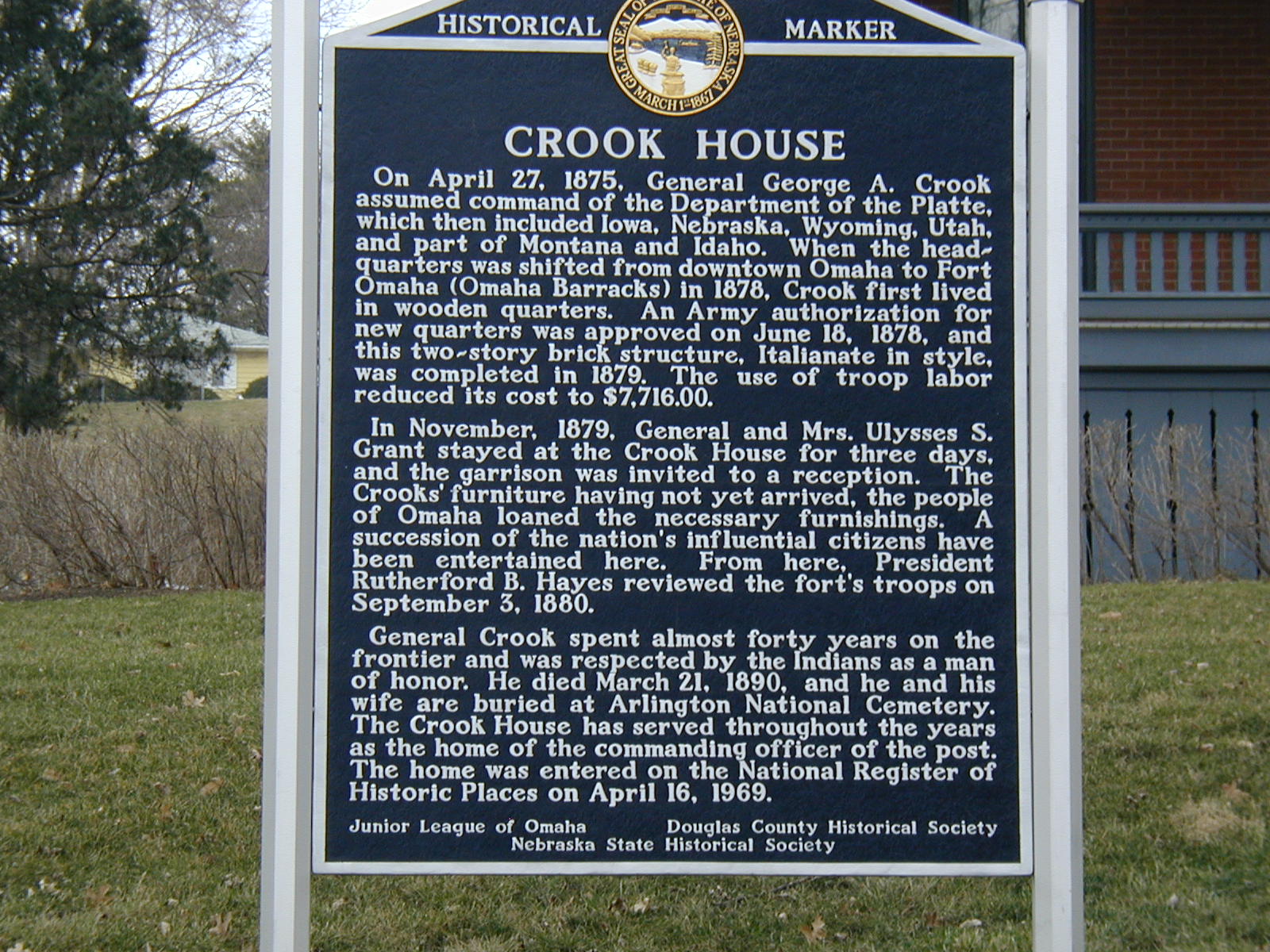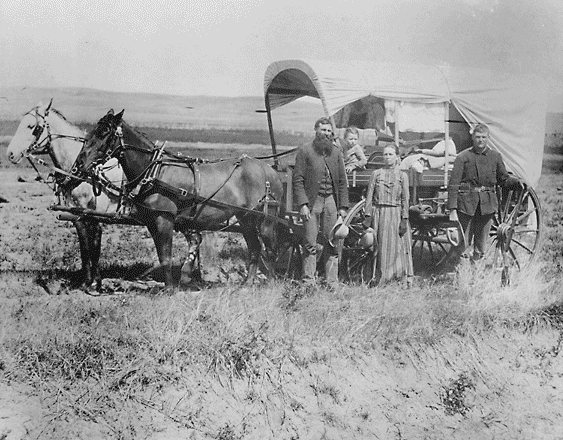|
Douglas County Historical Society
The Douglas County Historical Society, or DCHS, is located at 5730 North 30th Street in the General Crook House at Fort Omaha in north Omaha, Nebraska. The mission of the DCHS is to collect, preserve and present to the public the history of Douglas County, Nebraska.(ndAbout Us. Douglas County Historical Society. Retrieved 7/7/07. General Crook House Museum The DCHS operates the General Crook House Museum and the Crook House Victorian Heirloom Garden. See also * History of Omaha * History of Nebraska The history of the U.S. state of Nebraska dates back to its formation as a territory by the Kansas–Nebraska Act, passed by the United States Congress on May 30, 1854. The Nebraska Territory was settled extensively under the Homestead Act of ... References External linksDouglas County Historical Society- official site History of Omaha, Nebraska Organizations based in Omaha, Nebraska Historical societies in Nebraska {{US-org-stub ... [...More Info...] [...Related Items...] OR: [Wikipedia] [Google] [Baidu] |
General Crook House
The General George Crook House Museum is located in Fort Omaha. The Fort is located in the Miller Park neighborhood of North Omaha, Nebraska, United States. The house was listed on the National Register of Historic Places in 1969, and is a contributing property to the Fort Omaha Historic District. History In 1878, General George Crook moved headquarters for the Department of the Platte from downtown Omaha to Fort Omaha. The General Crook home was built in 1879 to be the residence of the commander. Constructed in an Italianate design, the building consists of two stories with a grand garden surrounding it. Crowned by hipped roofs, the building is asymmetrical in plan and is in good condition. A long one-story porch projects from its eastern facade. General George Crook was the only commander to occupy the home, as the department was disbanded after his tenure. In November, 1879, Crook and his wife entertained General and Mrs. Ulysses S. Grant at the home. In September 1880, Pres ... [...More Info...] [...Related Items...] OR: [Wikipedia] [Google] [Baidu] |
Fort Omaha
Fort Omaha, originally known as Sherman Barracks and then Omaha Barracks, is an Indian War-era United States Army supply installation. Located at 5730 North 30th Street, with the entrance at North 30th and Fort Streets in modern-day North Omaha, Nebraska, the facility is primarily occupied by Metropolitan Community College. A Navy Operational Support Center and Marine Corps Reserve unit, along with an Army Reserve unit occupy the periphery of the fort. The government deeded all but four parcels of the land to Metropolitan Community College in 1974. This is where Ponca Chief Standing Bear and 29 fellow Ponca were held prior to the landmark 1879 trial of '' Standing Bear v. Crook.'' Judge Elmer Dundy determined that American Indians were persons within the meaning of the law and that the Ponca were illegally detained after leaving Indian Territory in January 1879. The Fort Omaha historic district is listed on the National Register of Historic Places. The district includes the ... [...More Info...] [...Related Items...] OR: [Wikipedia] [Google] [Baidu] |
North Omaha
North Omaha is a community area in Omaha, Nebraska, in the United States. It is bordered by Cuming and Dodge Streets on the south, Interstate 680 on the north, North 72nd Street on the west and the Missouri River and Carter Lake, Iowa on the east, as defined by the University of Nebraska at Omaha and the Omaha Chamber of Commerce. Located just north of Downtown Omaha, the community includes some of the oldest neighborhoods in the city, including the Near North Side, Bemis Park, Saratoga and Florence. It is the site of the Mormon Pioneers' Winter Quarters and the Mormon Temple, a center of European immigration as well as the historically significant African-American community, and the birthplace of Malcolm X. Important landmarks in the community include the Bank of Florence, Prospect Hill Cemetery and the Fort Omaha Historical District. In 2006, North Omaha became the focus of national attention after local State Senator Ernie Chambers introduced an amendment to div ... [...More Info...] [...Related Items...] OR: [Wikipedia] [Google] [Baidu] |
Omaha
Omaha ( ) is the largest city in the U.S. state of Nebraska and the county seat of Douglas County. Omaha is in the Midwestern United States on the Missouri River, about north of the mouth of the Platte River. The nation's 39th-largest city, Omaha's 2020 census population was 486,051. Omaha is the anchor of the eight-county, bi-state Omaha-Council Bluffs metropolitan area. The Omaha Metropolitan Area is the 58th-largest in the United States, with a population of 967,604. The Omaha-Council Bluffs-Fremont, NE-IA Combined Statistical Area (CSA) totaled 1,004,771, according to 2020 estimates. Approximately 1.5 million people reside within the Greater Omaha area, within a radius of Downtown Omaha. It is ranked as a global city by the Globalization and World Cities Research Network, which in 2020 gave it "sufficiency" status. Omaha's pioneer period began in 1854, when the city was founded by speculators from neighboring Council Bluffs, Iowa. The city was founded along th ... [...More Info...] [...Related Items...] OR: [Wikipedia] [Google] [Baidu] |
Nebraska
Nebraska () is a state in the Midwestern region of the United States. It is bordered by South Dakota to the north; Iowa to the east and Missouri to the southeast, both across the Missouri River; Kansas to the south; Colorado to the southwest; and Wyoming to the west. It is the only triply landlocked U.S. state. Indigenous peoples, including Omaha, Missouria, Ponca, Pawnee, Otoe, and various branches of the Lakota ( Sioux) tribes, lived in the region for thousands of years before European exploration. The state is crossed by many historic trails, including that of the Lewis and Clark Expedition. Nebraska's area is just over with a population of over 1.9 million. Its capital is Lincoln, and its largest city is Omaha, which is on the Missouri River. Nebraska was admitted into the United States in 1867, two years after the end of the American Civil War. The Nebraska Legislature is unlike any other American legislature in that it is unicameral, and its members a ... [...More Info...] [...Related Items...] OR: [Wikipedia] [Google] [Baidu] |
Douglas County, Nebraska
Douglas County is a county located in the U.S. state of Nebraska. As of the 2020 United States Census, the population is 584,526. It is the state's most populous county, home to well over one-fourth of Nebraska's residents. Its county seat is Omaha, the state's largest city. The county was established in 1854 and named after Stephen A. Douglas (1813–1861), who was then serving as Senator from Illinois. Douglas County is part of the Omaha-Council Bluffs, NE-IA Metropolitan Statistical Area. In the Nebraska license plate system, Douglas County was represented by the prefix "1" (as it had the largest number of vehicles registered in the state when the license plate system was established in 1922). In 2002, the state discontinued the 1922 system in the three most populous counties: Douglas, Lancaster, and Sarpy counties. Geography Douglas County is on the east side of Nebraska. Its east boundary line abuts the west boundary line of the state of Iowa, across the Missouri Ri ... [...More Info...] [...Related Items...] OR: [Wikipedia] [Google] [Baidu] |
History Of Omaha
The history of Omaha, Nebraska, began before the settlement of the city, with speculators from neighboring Council Bluffs, Iowa staking land across the Missouri River illegally as early as the 1840s. When it was legal to claim land in Indian Country, William D. Brown was operating the Lone Tree Ferry to bring settlers from Council Bluffs to Omaha. A treaty with the Omaha Tribe allowed the creation of the Nebraska Territory, and Omaha City was founded on July 4, 1854. With early settlement came claim jumpers and squatters, and the formation of a vigilante law group called the Omaha Claim Club, which was one of many claim clubs across the Midwest. During this period many of the city's founding fathers received lots in Scriptown, which was made possible by the actions of the Omaha Claim Club. The club's violent actions were challenged successfully in a case ultimately decided by the U.S. Supreme Court, ''Baker v. Morton'', which led to the end of the organization. Surrounded b ... [...More Info...] [...Related Items...] OR: [Wikipedia] [Google] [Baidu] |
History Of Nebraska
The history of the U.S. state of Nebraska dates back to its formation as a territory by the Kansas–Nebraska Act, passed by the United States Congress on May 30, 1854. The Nebraska Territory was settled extensively under the Homestead Act of 1862 during the 1860s, and in 1867 was admitted to the Union as the 37th U.S. state. The Plains Indians are the descendants of a long line of succeeding cultures of indigenous peoples in Nebraska who occupied the area for thousands of years before European arrival and continue to do so today. Pre-historic Mesozoic During the Late Cretaceous, between 66 million to 99 million years ago, three-quarters of Nebraska was covered by the Western Interior Seaway, a large body of water that covered one-third of the United States. The sea was occupied by mosasaurs, ichthyosaurs, and plesiosaurs. Additionally, sharks such as ''Squalicorax'', and fish such as ''Pachyrhizodus'', '' Enchodus'', and the '' Xiphactinus'', a fish larger than ... [...More Info...] [...Related Items...] OR: [Wikipedia] [Google] [Baidu] |
History Of Omaha, Nebraska
The history of Omaha, Nebraska, began before the settlement of the city, with speculators from neighboring Council Bluffs, Iowa staking land across the Missouri River illegally as early as the 1840s. When it was legal to claim land in Indian Country, William D. Brown was operating the Lone Tree Ferry to bring settlers from Council Bluffs to Omaha. A treaty with the Omaha Tribe allowed the creation of the Nebraska Territory, and Omaha City was founded on July 4, 1854. With early settlement came claim jumpers and squatters, and the formation of a vigilante law group called the Omaha Claim Club, which was one of many claim clubs across the Midwest. During this period many of the city's founding fathers received lots in Scriptown, which was made possible by the actions of the Omaha Claim Club. The club's violent actions were challenged successfully in a case ultimately decided by the U.S. Supreme Court, ''Baker v. Morton'', which led to the end of the organization. Surrounded b ... [...More Info...] [...Related Items...] OR: [Wikipedia] [Google] [Baidu] |
Organizations Based In Omaha, Nebraska
An organization or organisation (Commonwealth English; see spelling differences), is an entity—such as a company, an institution, or an association—comprising one or more people and having a particular purpose. The word is derived from the Greek word ''organon'', which means tool or instrument, musical instrument, and organ. Types There are a variety of legal types of organizations, including corporations, governments, non-governmental organizations, political organizations, international organizations, armed forces, charities, not-for-profit corporations, partnerships, cooperatives, and educational institutions, etc. A hybrid organization is a body that operates in both the public sector and the private sector simultaneously, fulfilling public duties and developing commercial market activities. A voluntary association is an organization consisting of volunteers. Such organizations may be able to operate without legal formalities, depending on jurisdiction, incl ... [...More Info...] [...Related Items...] OR: [Wikipedia] [Google] [Baidu] |




